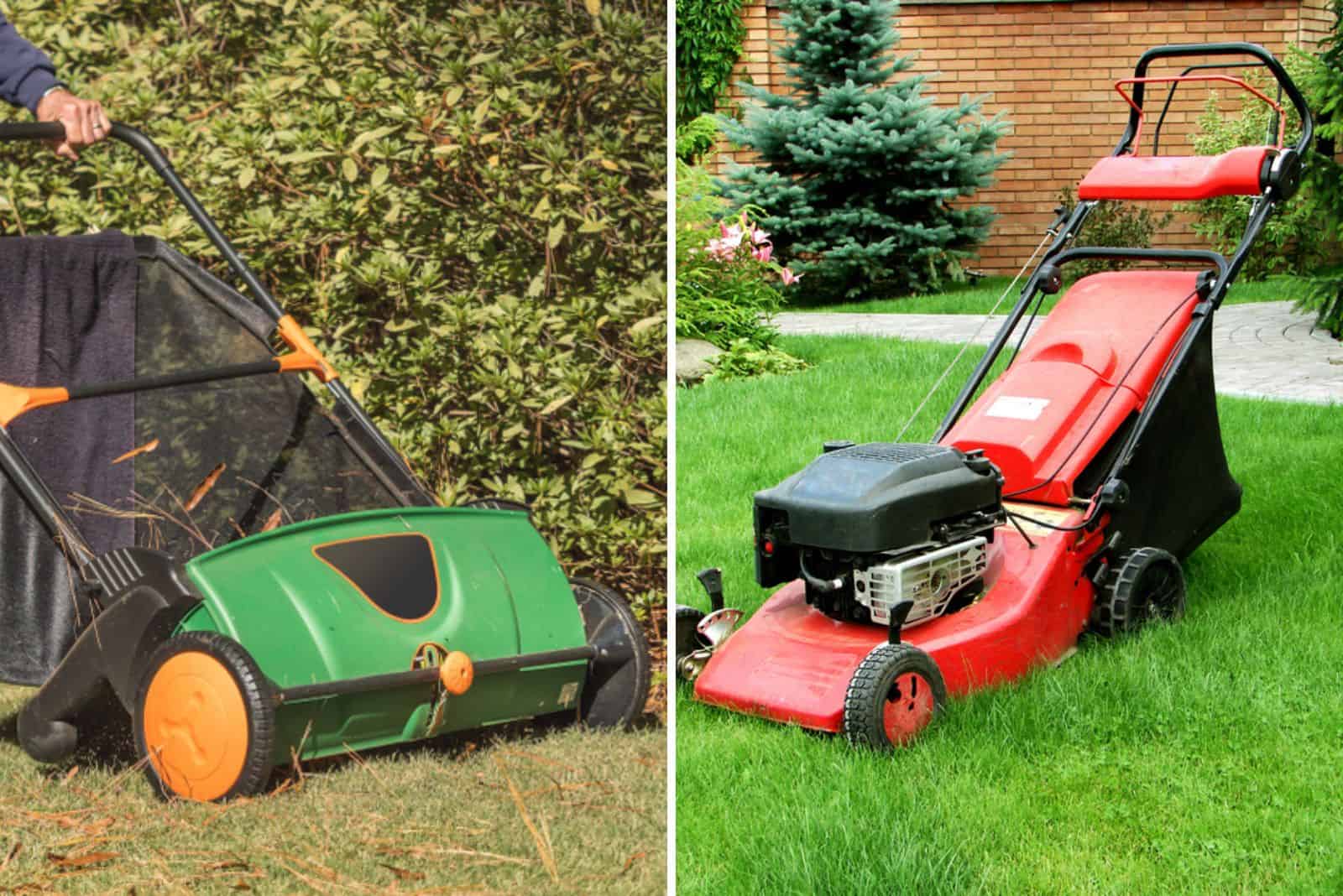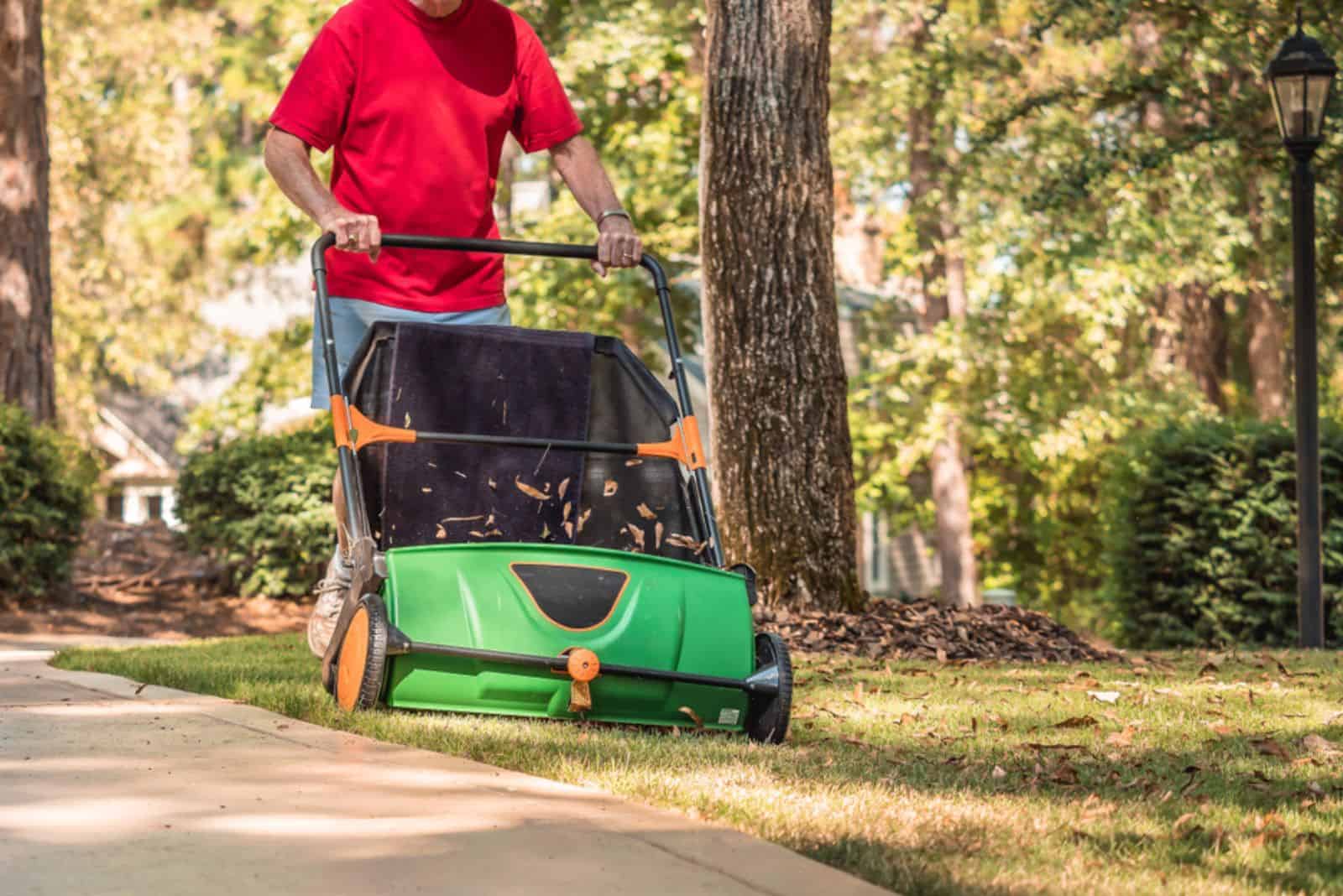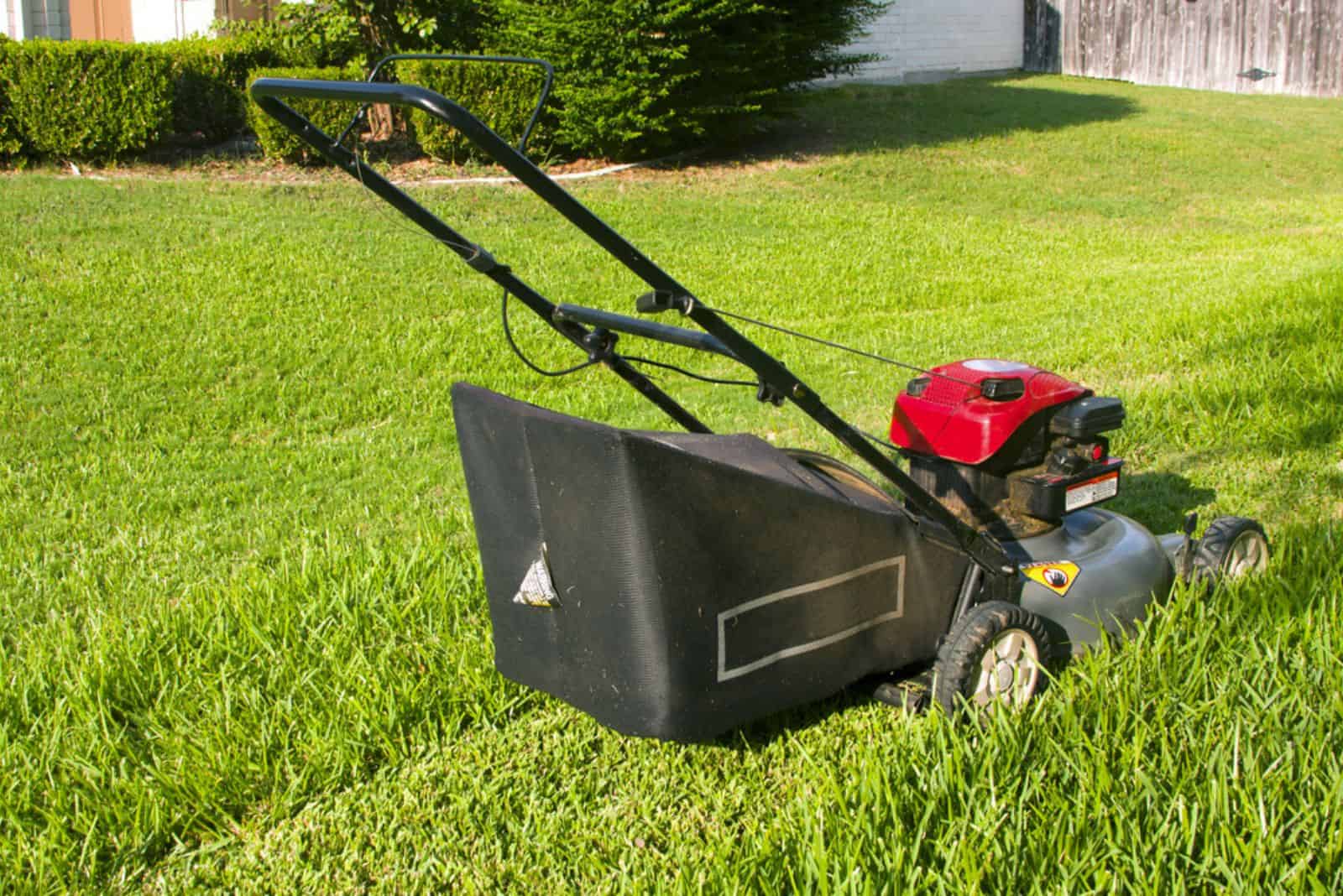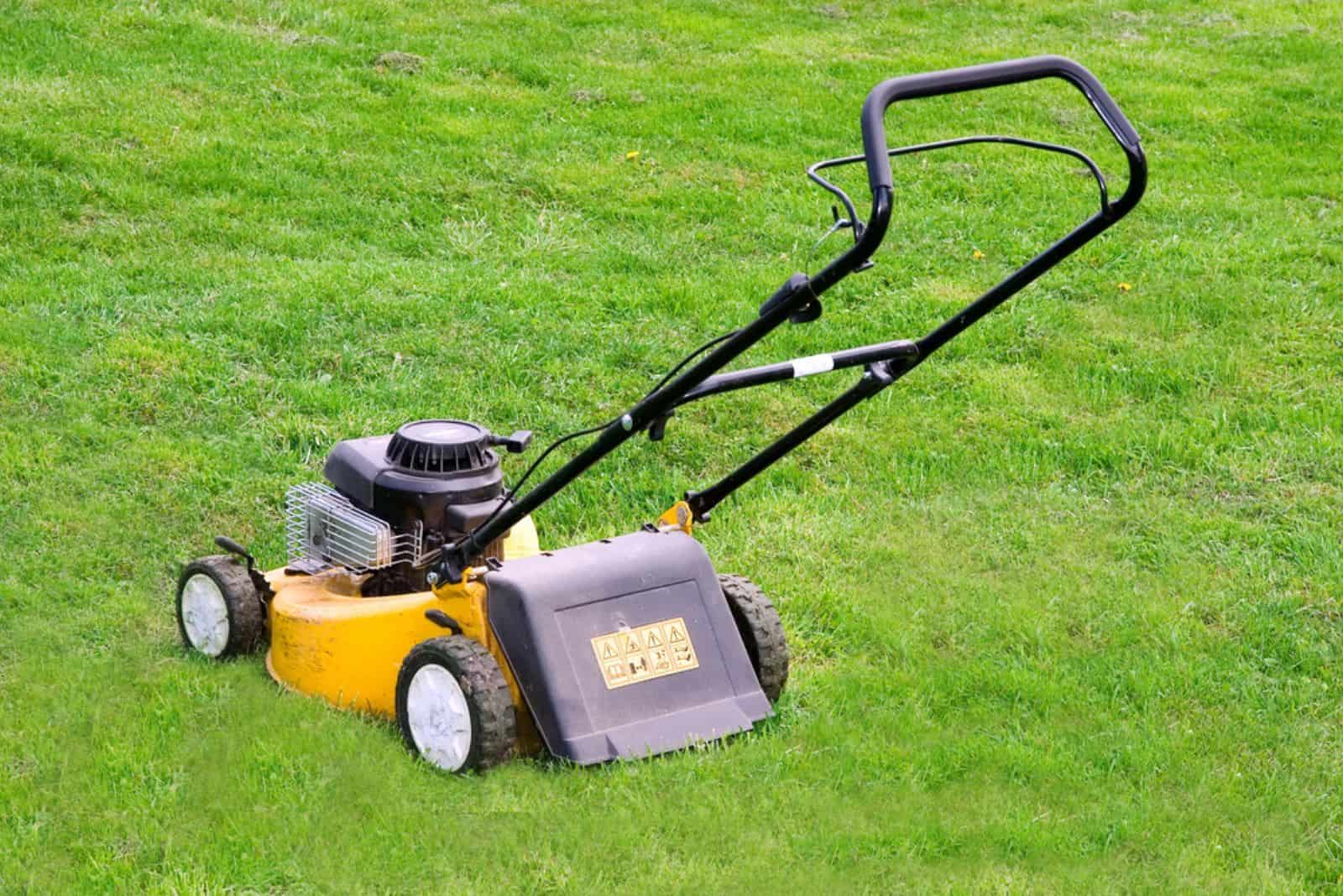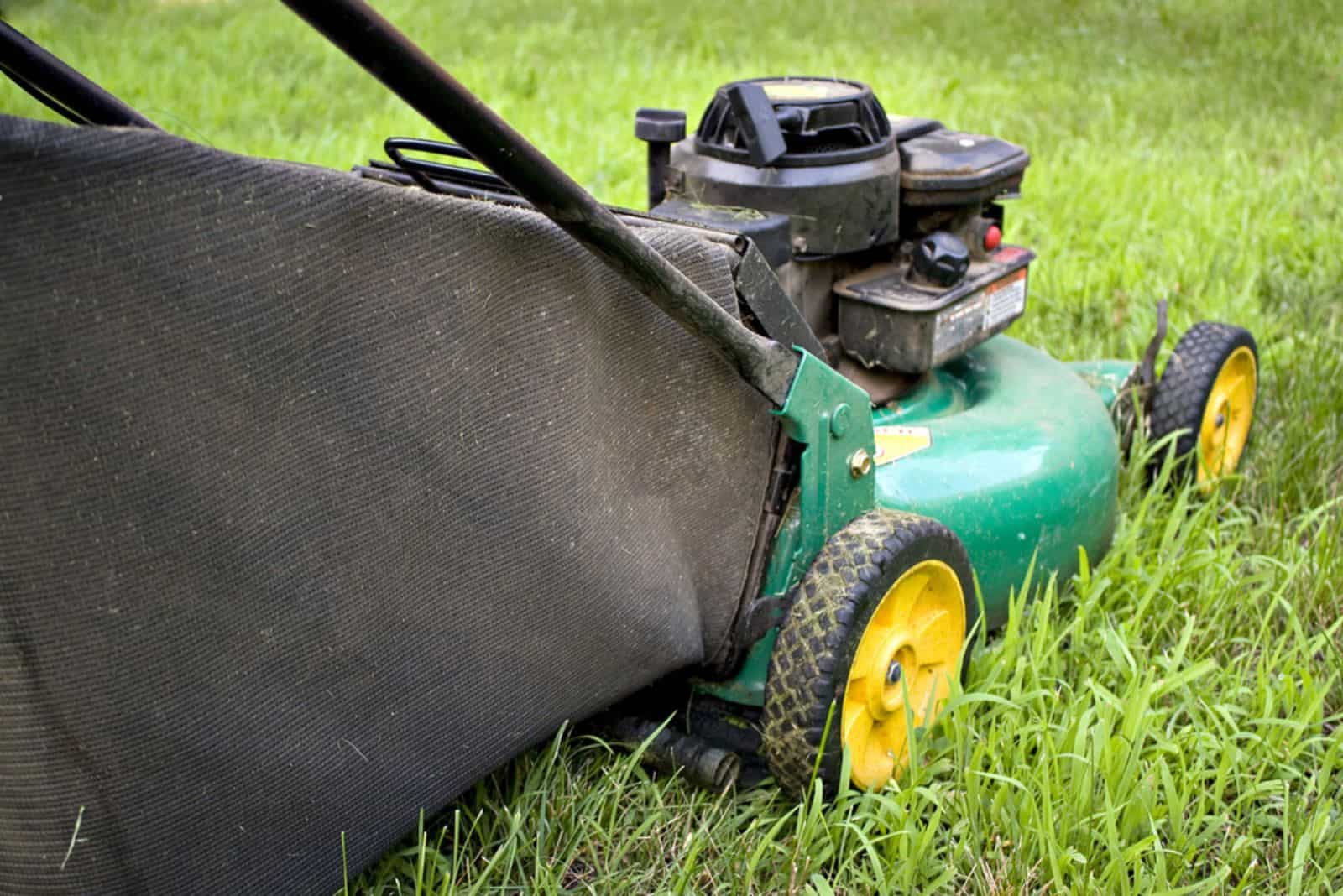A well-maintained lawn adds to the beauty of a home and a healthy and inviting outdoor space.
But how do we keep it that way? Well, two common tools that play a significant role in keeping lawns clean and healthy are sweepers and baggers. They have different functions and characteristics but the same purpose.
That’s why I decided to explore the differences between lawn sweepers vs. baggers. I’ll examine their functions, designs, and appropriateness for various lawn care needs.
Hopefully, my comparison will help you decide which tool is perfect for your landscape routine.
Let’s dive in!
| Lawn Sweeper | Bagger | |
|---|---|---|
| Function | Collecting debris from lawn | Collecting grass during mowing |
| Design | Rotating brushes attached to a cylindrical drum | Attachment that fits on the rear or side of a mower |
| Types | Manual push and tow-behind | Different for different mowers |
| Noise | Quiet | Loud |
| Maintenance | Easy to maintain | More difficult to maintain |
Lawn Sweeper
Let me tell you about these awesome tools called lawn sweepers. They help maintain a clean lawn by picking up clippings, leaves, and other debris that clutters your yard.
They’re perfect for keeping your outdoors looking fresh and healthy!
Below, I’ll dig deeper into their main purpose, design, different types, and all the cool benefits they bring to the table for top-notch lawn care.
So, let’s get started!
Function
The main job of sweepers is to gather up all the bits and pieces on your lawn, like leaves and clippings. They’re like your lawn’s very own superheroes!
Lawn sweepers prevent thatch from building up and encourage the grass to grow strong and healthy by removing all this stuff.
Design
The design is pretty cool – if you can call it that. They have these spinning brushes attached to a cylinder-shaped drum. When you push or tow the sweeper, the brushes spin around, sweeping up debris and tossing it into a hopper or bag.
The best part is that you can take it off and empty it, making it super convenient to get rid of all that collected debris. Pretty nifty, right?
Types
There are two types of these lawn-loving gadgets: manual push and tow-behind.
Manual push lawn sweepers are smaller and you have to push them yourself, which makes them perfect for smaller yards. You drive them around yourself like a lawnmower, and they have a more compact hopper or bag for collecting debris.
Tow-behind lawn sweepers are larger and designed to hitch a ride on a lawn tractor or riding mower. With a larger debris-collecting capacity, they can tackle bigger lawns.
We can also talk about power and hand-powered sweepers. It’s kind of like an extension of the previous distinction.
We operate hand-powered push sweepers manually. Power sweepers, however, need gas or electricity to work their magic.
Noise And Maintenance
One awesome perk of lawn sweepers is how quiet they are. They don’t rely on a mower’s engine like baggers do, so they’re much more peaceful for your neighbors.
They’re easy to maintain, although they can be slightly trickier than baggers as they’ve got more moving parts. But hey, don’t worry – you’ll get the hang of cleaning out all the debris in no time!
Benefits And Drawbacks
| PROS | CONS |
|---|---|
| Efficient at collecting lawn debris | Limited function (not suitable for mulching and bagging) |
| Quiet operation | Small capacity |
| Two operation types | Not effective in wet conditions |
| Higher maintenance |
Bagger
Baggers are an essential attachment for lawnmowers that collect clippings as you mow the lawn, promoting a clean appearance.
They are like your lawnmower’s trusty sidekick, keeping your lawn looking spick and span. So, let’s dive into their main function, different types, and other fun facts you should know about them.
Function
The main goal of a bagger is to gather up grass clippings as you mow your lawn, making your yard look super neat and tidy.
This gives your lawn a polished look and helps prevent thatch buildup, which can cause all sorts of problems for your grass.
Additionally, baggers are super handy to remove clippings, especially in areas where the city picks up bagged yard waste. This way you won’t fill your trash can with garden debris and garbage collectors will have an easier time collecting all of it.
Design
This nifty tool is actually an attachment that hooks onto the back or side of your lawnmower, either directly or through a chute.
And as it collects grass, it’s stored in a bag made of fabric, plastic, or metal. One of the things I love about these bags is that you can easily remove and empty them, making disposal a breeze.
Types
There are different types of baggers for various lawnmowers, including push mowers, self-propelled mowers, and riding mowers.
Push and self-propelled mowers usually come with smaller baggers, while riding mowers can handle bigger baggers with more room for clippings.
Noise And Maintenance
One downside of using a bagger is that it can be a bit noisy as it relies on the mower’s engine or motor to work.
But don’t let that stop you from getting one. They also need minimal maintenance. However, you’ll have to clean them regularly, particularly the chute and other parts that tend to get clogged.
Benefits And Drawbacks
| PROS | CONS |
|---|---|
| Efficient at collecting clippings and leaves | Pricier than sweepers |
| Versatile (available for many different mowers) | Loud operation |
| Large capacity | Use gas or oil |
| Low maintenance | Can’t use it without mower |
| Suitable for bagging and mulching |
Additional Features And Accessories
Here are some tips and tricks that I’ve picked up over the years that can help you maintain your lawn and tools with ease.
For starters, adjusting the brush height setting on your sweeper can make your life so much simpler. When you get it just right, the sweeper will pick up debris like a champ! Collapsible hoppers are also a game-changer when it comes to storing and transportation when not in use.
Still want to level up? Grab some extra attachments for dethatching and aerating your lawn – your grass will thank you!
When it comes to baggers, its mulching ability will save you loads of time. And to make things even easier, get a tool with capacity indicators. This way, you’ll know exactly when it’s time to empty the bag without any guesswork.
Additionally, there are chute designs for more efficient debris collection, including side and rear discharge options. And which one you get purely depends on your needs.
Maintenance Tips And Best Practices
Keeping your lawn sweepers and baggers in tip-top shape is super important for their performance and longevity.
So in the next sections, you’ll find all the tips you need for cleaning, storing, and more!
Cleaning
The cleaning advice I have works for both sweepers and baggers.
You don’t have to clean the entire unit every time you use it. But do make sure to remove the clippings and debris from the hopper or bag, brushes, and so on after each use.
This will help you avoid any build-up in crucial areas, such as the chute, and keep your tools from getting jammed.
Storing
After you’re done using them, store your bagger and sweeper in a cool, dry place. This will help them last longer, prevent damage, and keep you safe.
Remember, using damaged tools can be dangerous, so tuck them away in a shed or garage.
Periodic Maintenance
Don’t forget about periodic maintenance tasks like lubricating moving parts. You should also check for wear and tear and replace worn-out components when needed.
Regular maintenance goes a long way in preventing breakdowns and extending the life of your equipment!
Safety
Safety is key when using lawn sweepers and baggers. So, be sure to handle them properly, avoid overfilling, and wear the right protective gear.
Always read and follow the manufacturer’s safety guidelines so that you know you’re using the equipment safely. And if you need extra help, you can check out the manufacturer’s website or chat with a local expert.
Choosing The Right Tool For Your Lawn
Now, you might be wondering which tool is better: a lawn sweeper or a bagger? The answer depends on your needs.
If you’ve got a smaller lawn, a traditional manual push sweeper or a mower with a bagger will do just fine.
But if you have a large yard and don’t want to spend all day collecting debris, tow-behind tools might be your best bet.
If your main goal is to collect clippings while mowing, a bagger is the way to go. But if you’re battling leaves and tiny twigs on your lawn, a sweeper could be your new best friend.
And hey, if you’re like my neighbor who can’t stand the noise of a bagger, give a sweeper a try! It might need a bit more maintenance, but the quiet operation is totally worth it.
Here are some more things that can help you decide between the two:
Final Thoughts
To keep your lawn clean and healthy, you need the right tools. Lawn sweepers and baggers are both popular choices.
Luckily, there are different types that have functions, noise levels, maintenance requirements, and designs. And all these things can help us decide between the two!
In my case, I love baggers because I like collecting clippings while mowing. But if your lawn has more debris, like leaves and twigs, a sweeper might be your new go-to tool.
Happy lawn care, and until next time!

